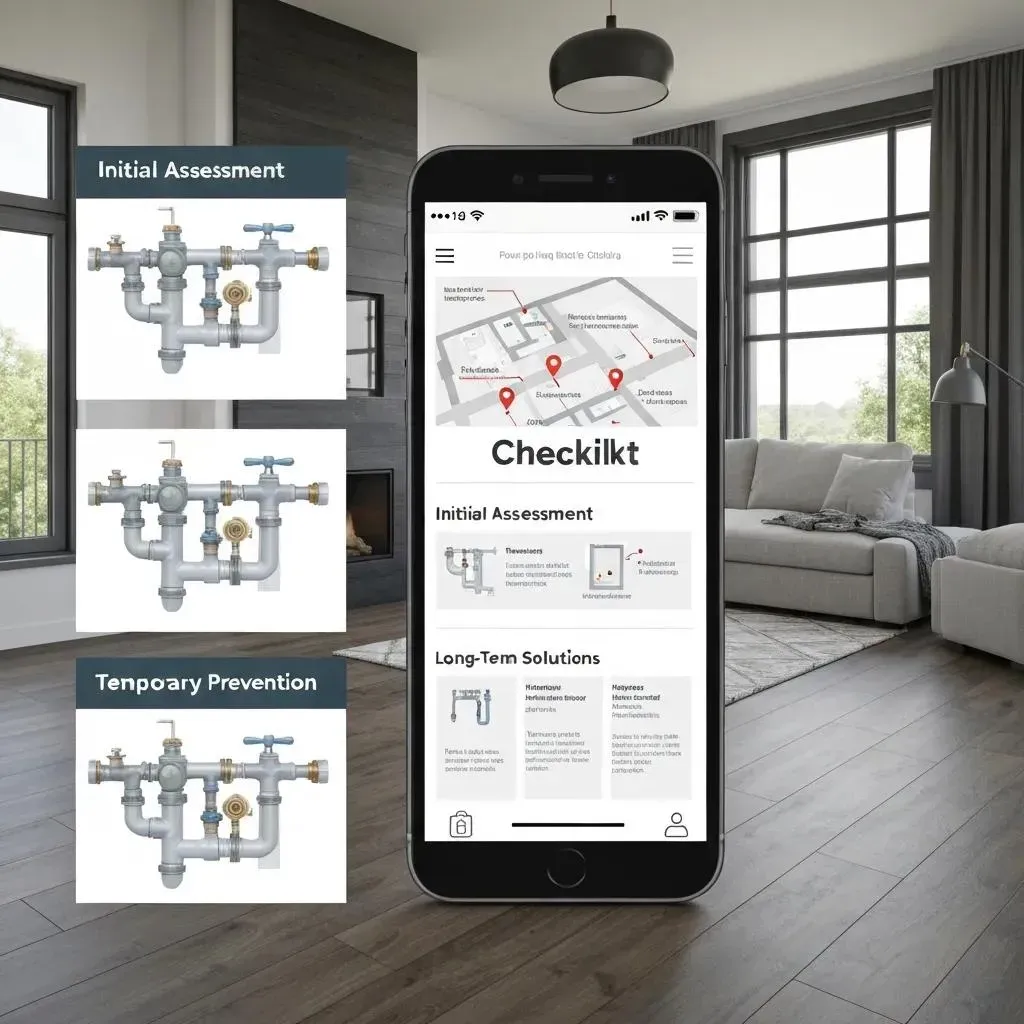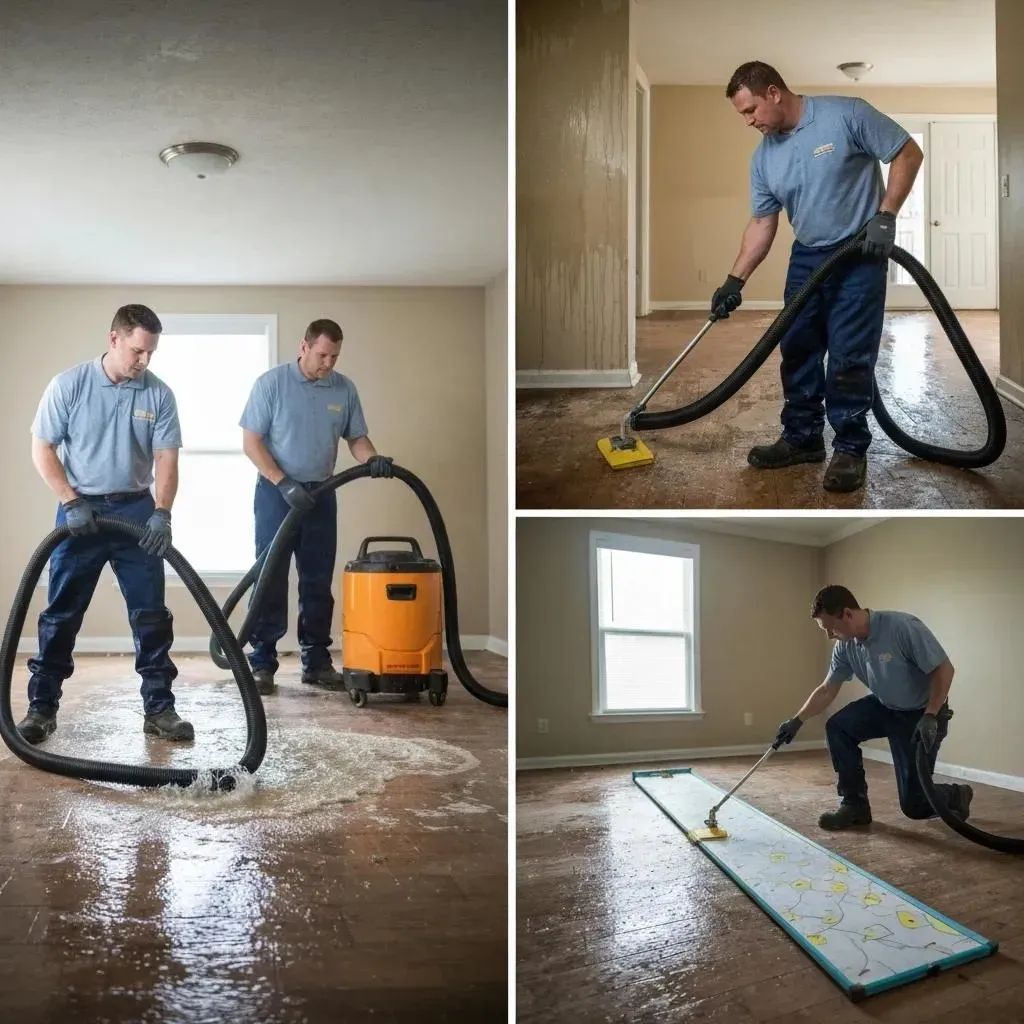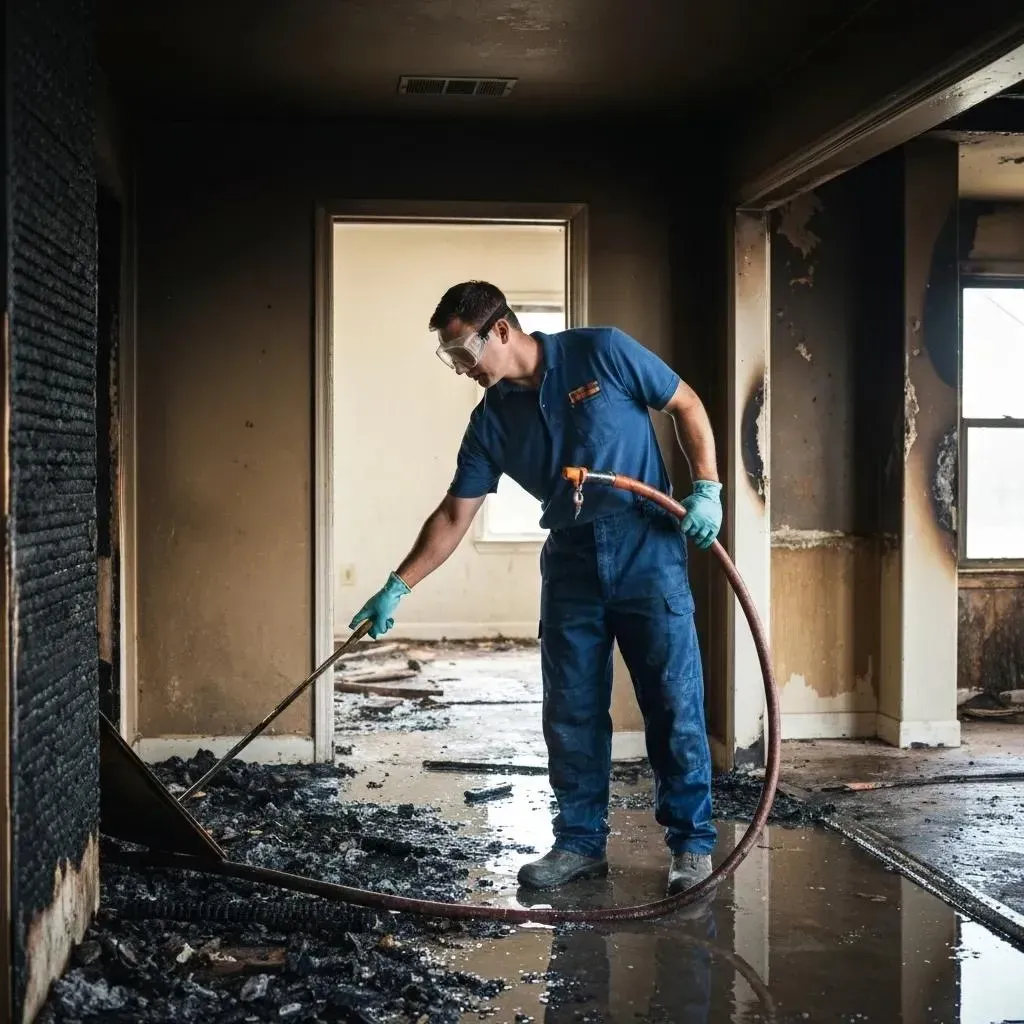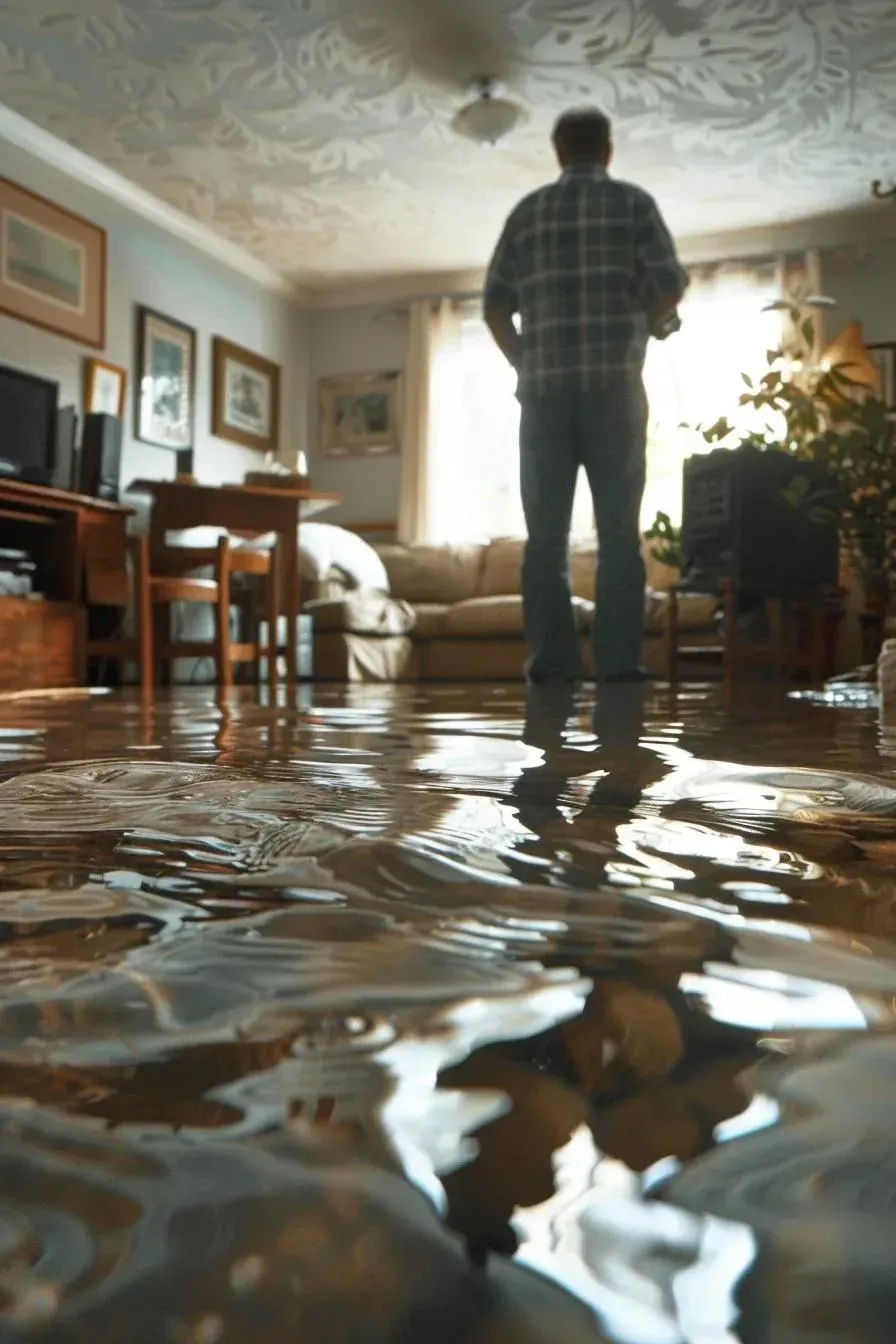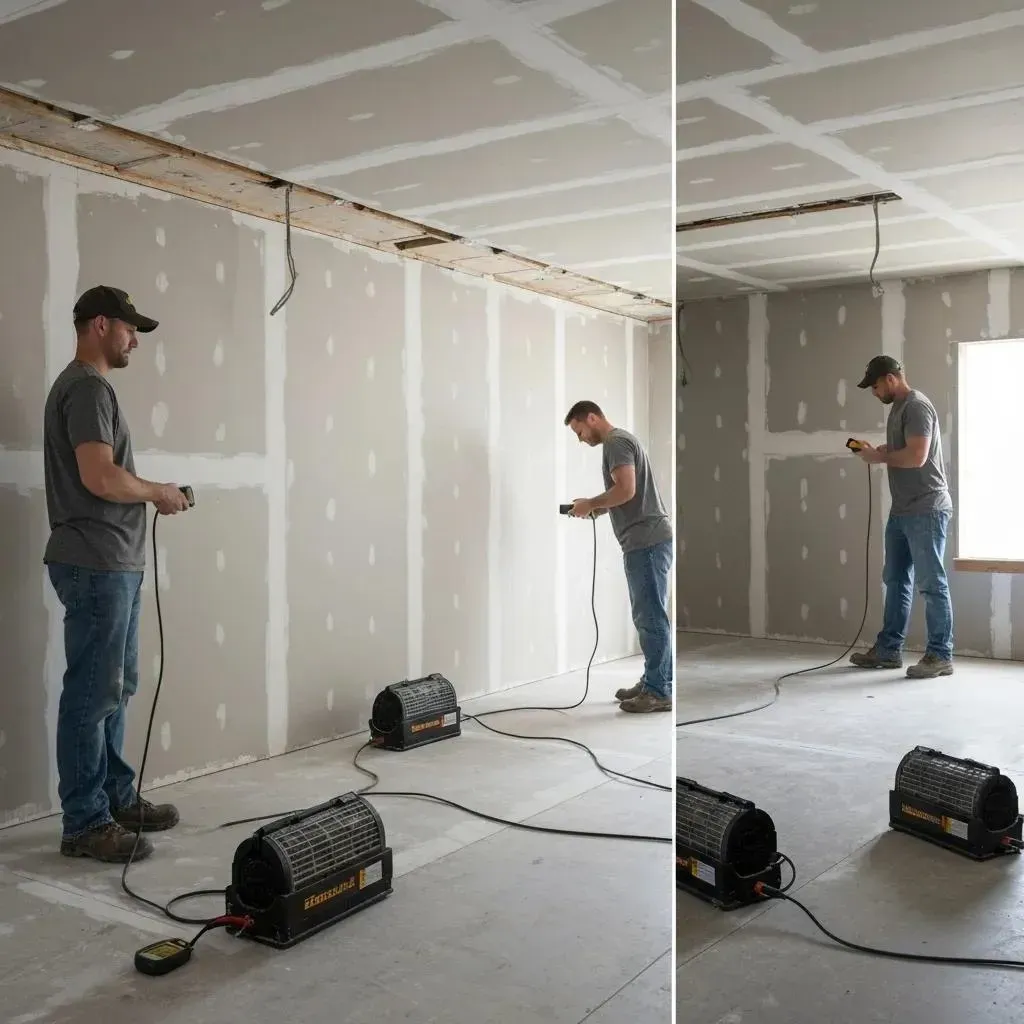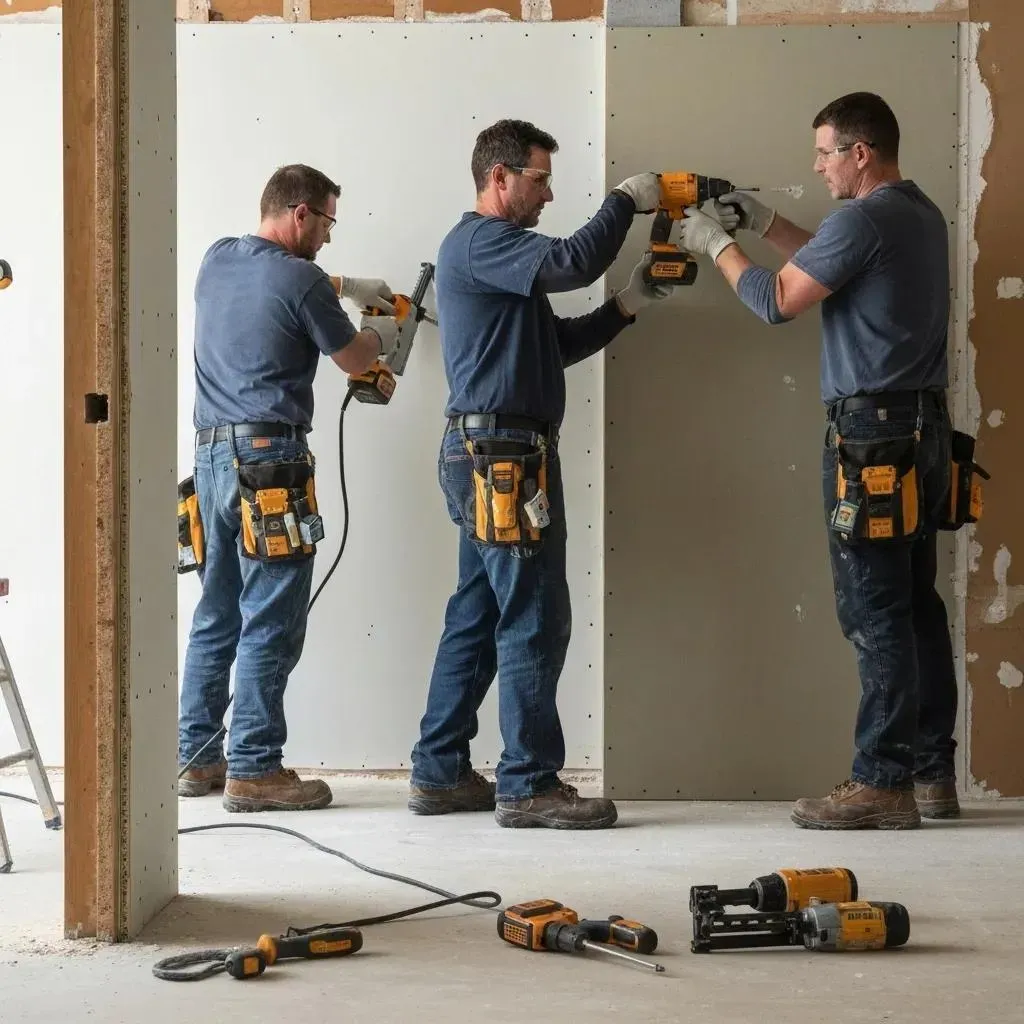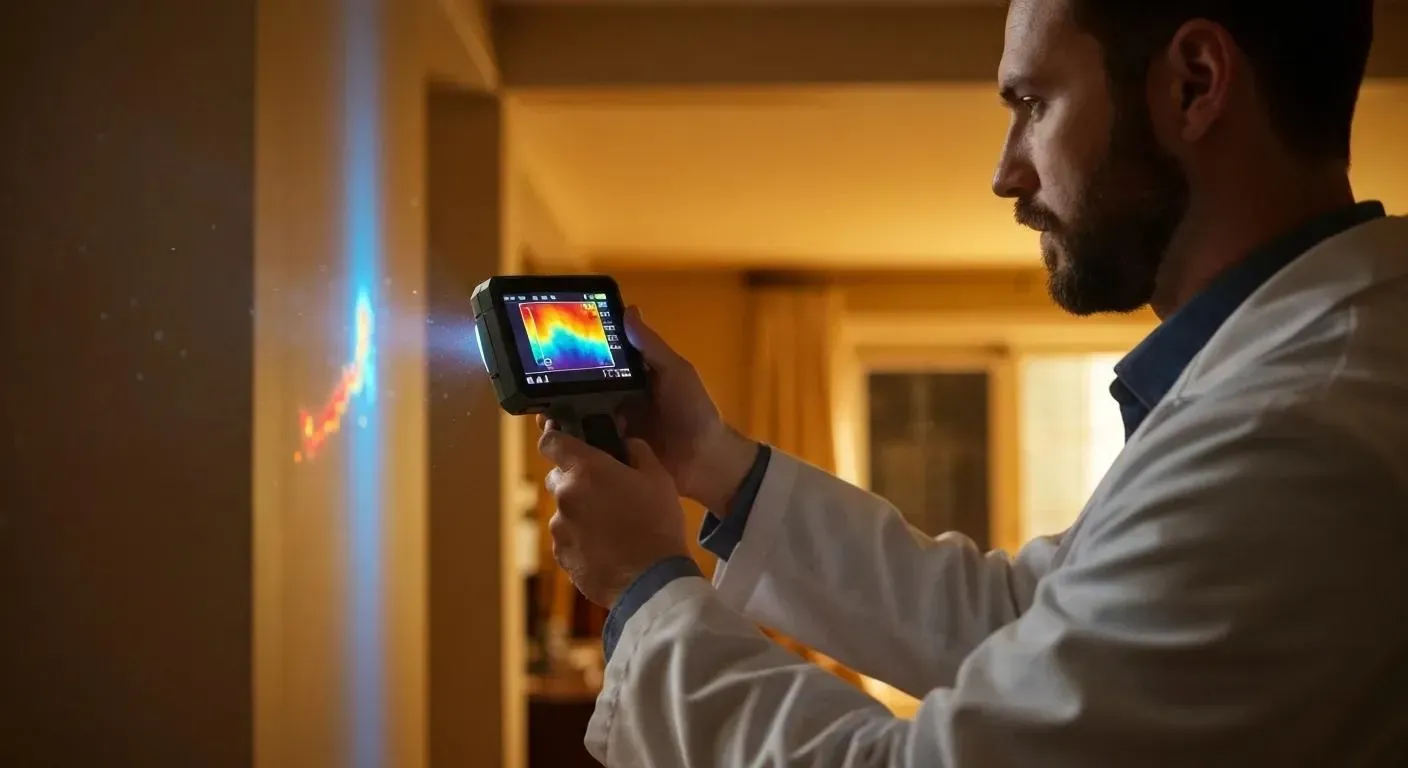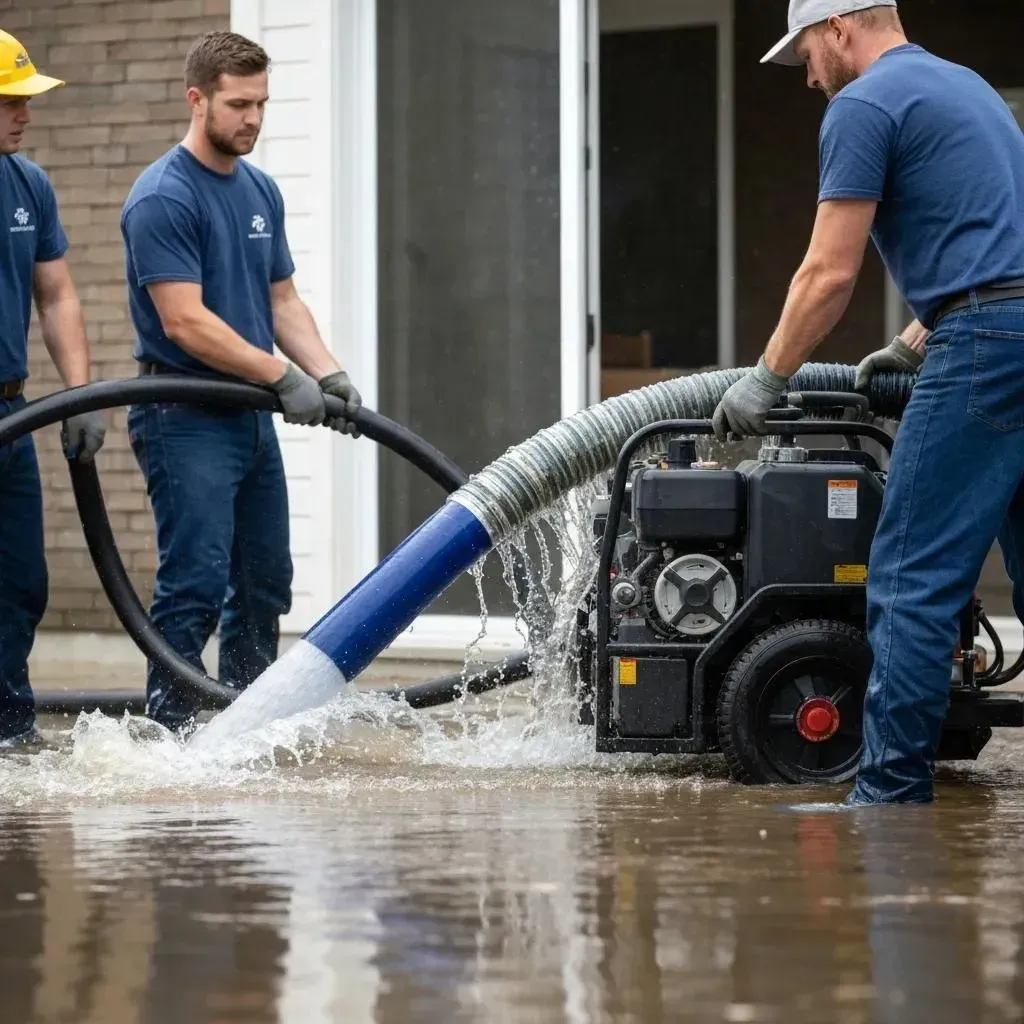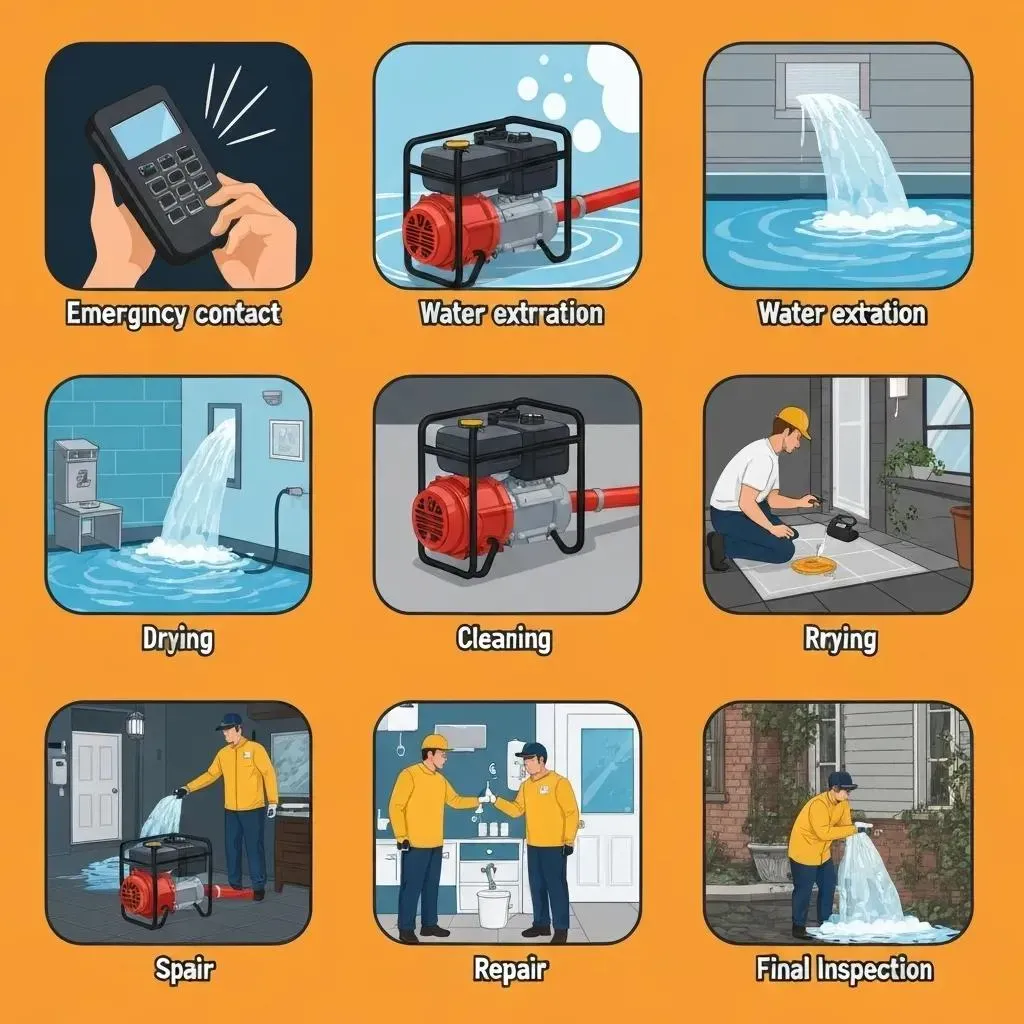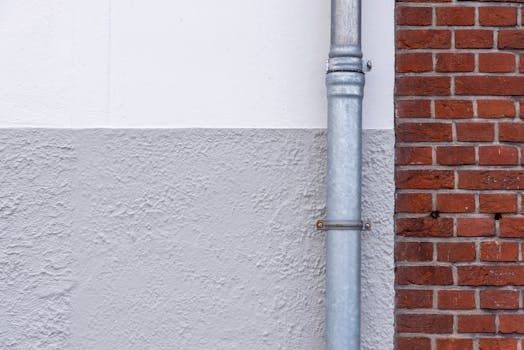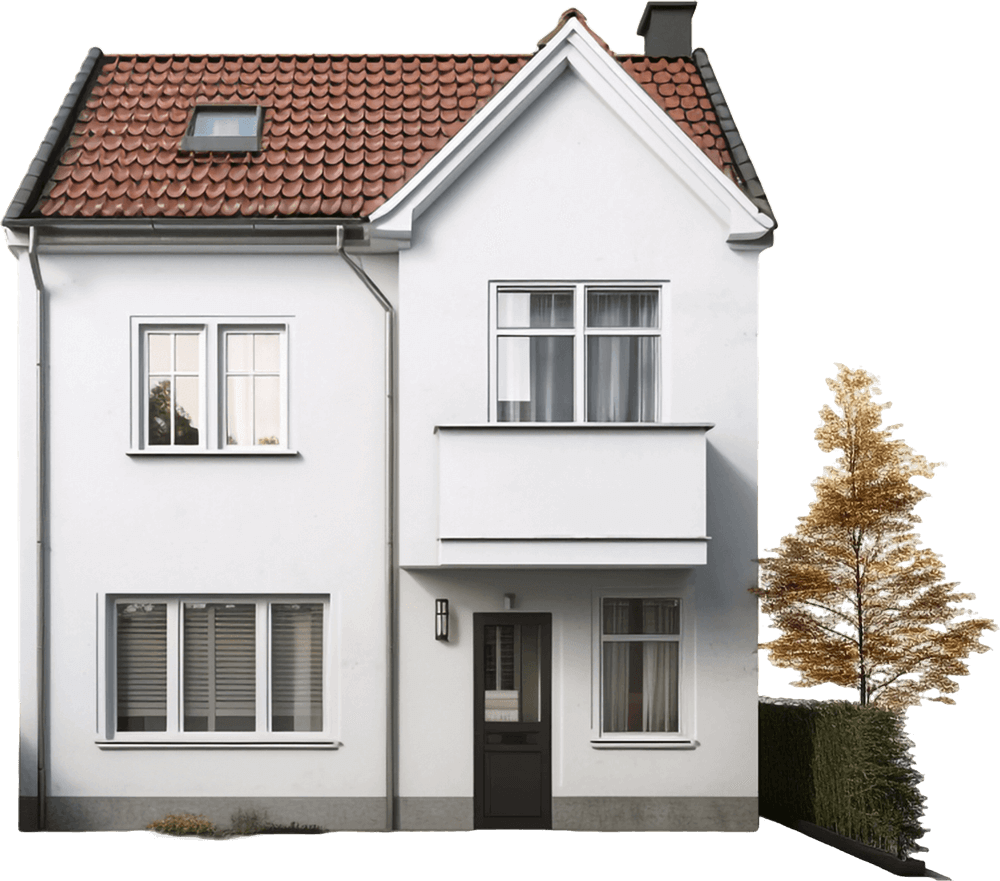Blog
Attic Mold: What Denver Homeowners Need to Know About Causes, Prevention & Safe Removal
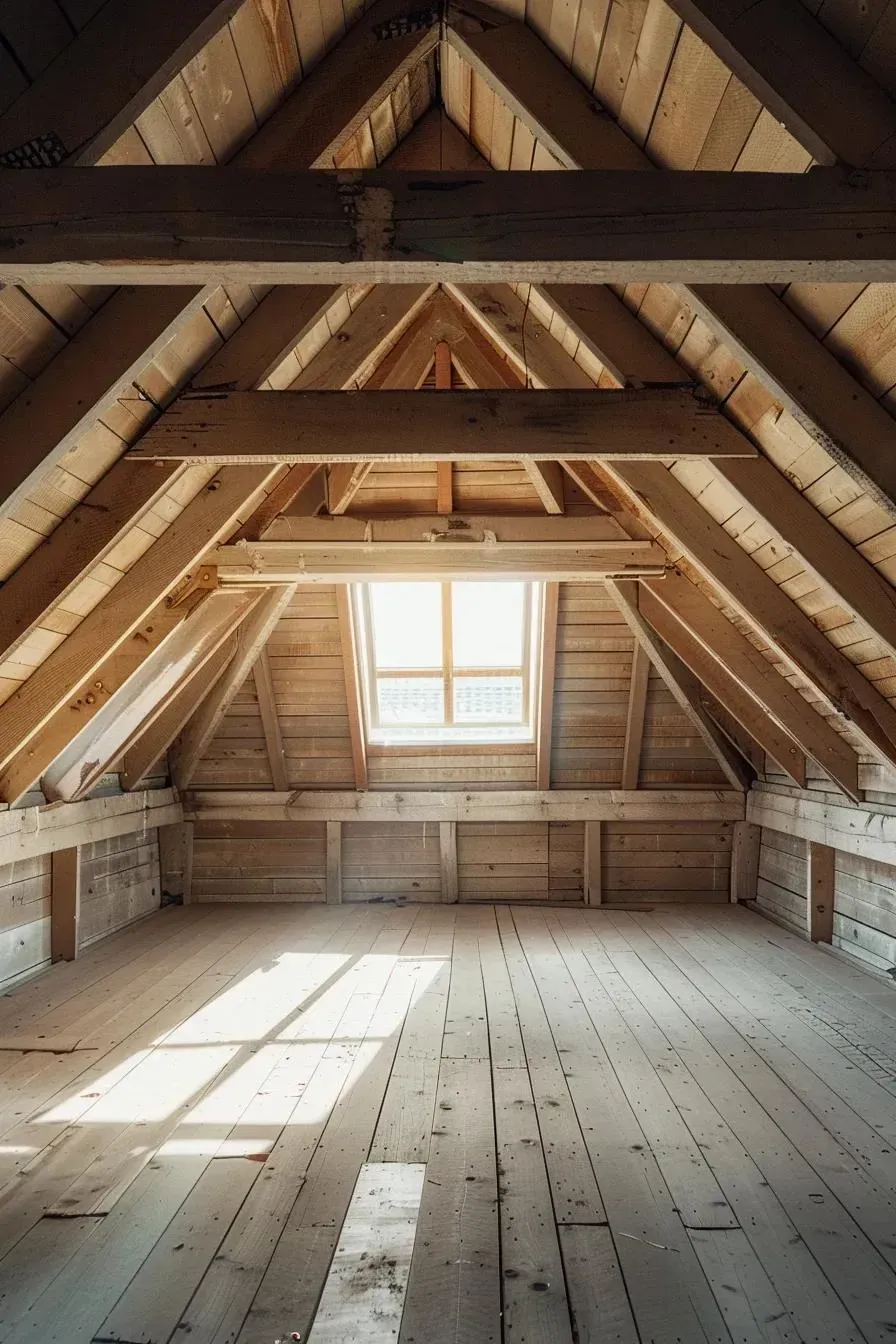
Around half of Denver homes grapple with attic mold, a common issue stemming from fluctuating humidity and roof condensation. Tackling attic mold removal is key to ensuring healthy indoor air and safeguarding your home's structure.
Attic Mold in Denver Homes
Nearly half of Denver homes experience attic mold due to seasonal humidity swings and roof condensation, making attic mold removal essential for maintaining indoor air quality and protecting structural elements.
This information highlights how widespread attic mold is in Denver, underscoring why mold removal is so important.
In this comprehensive guide, you'll learn about the main reasons attic mold appears in Denver homes, practical ways to prevent it, the professional cleanup process, what to expect cost-wise, the risks of black mold, why Accountable Home Services is your best choice, and how inspections and testing guarantee a mold-free attic. As IICRC-certified mold remediation experts ready to provide free estimates and 24/7 emergency assistance, Accountable Home Services brings together local knowledge and top-tier safety practices to protect your home.
What Typically Causes Attic Mold in Denver Homes?
Attic mold thrives when moisture meets warm surfaces, creating the perfect breeding ground for fungi that can damage wooden structures.
Common Causes of Attic Mold
Roof leaks, inadequate ventilation, improper insulation, and exhaust vents that vent into the attic are common causes of mold growth.
This source points out the usual culprits behind attic mold, which is vital for knowing how to stop it from growing.
How Do Roof Leaks Lead to Attic Mold?
When roofs leak, water seeps directly onto the roof sheathing and insulation. This constant dampness activates mold spores and speeds up the decay of wooden components. Fixing damaged shingles or flashing promptly stops water from getting in and keeps attic materials dry.
Why Is Poor Attic Ventilation a Major Mold Culprit?
Insufficient soffit, ridge, or gable vents trap moist air, causing it to condense on cooler surfaces. This moisture buildup encourages fungal growth on rafters and drywall, making balanced airflow essential for removing trapped humidity.
How Does Incorrect Insulation Encourage Attic Mold?
Insulation that has gaps or isn't thick enough (low R-value) creates cold spots on the roof sheathing. This leads to condensation and wet insulation, which is a prime spot for mold. Proper insulation installation ensures consistent temperatures and reduces thermal bridging that feeds mold colonies.
Can Exhaust Vents from Bathrooms and Kitchens Cause Attic Mold?
When exhaust fans blow moist air into the attic instead of outside, that warm, humid air settles on framing and insulation. Over time, this hidden moisture source fuels mold growth behind walls and under the roof deck.
What's the Connection Between High Humidity, Condensation, and Attic Mold?
Denver's humid summer storms and the temperature differences between indoors and outdoors in winter push attic humidity levels above 60%. This triggers condensation on wood and metal surfaces. Without dehumidification or proper airflow, mold spores quickly multiply and spread.
How Can Homeowners Prevent Mold in Their Attics?
To effectively prevent attic mold, homeowners should focus on improving airflow, staying on top of maintenance, sealing air leaks, managing moisture, and ensuring correct insulation practices. These steps remove the conditions mold needs to grow.
Preventing Attic Mold
Effective attic mold prevention combines improved airflow, proactive maintenance, airtight sealing, moisture control, and correct insulation practices to eliminate the environmental factors mold relies on.
This source lays out the key strategies for preventing mold from growing in attics.
What Are the Best Ventilation Upgrades to Stop Attic Mold?
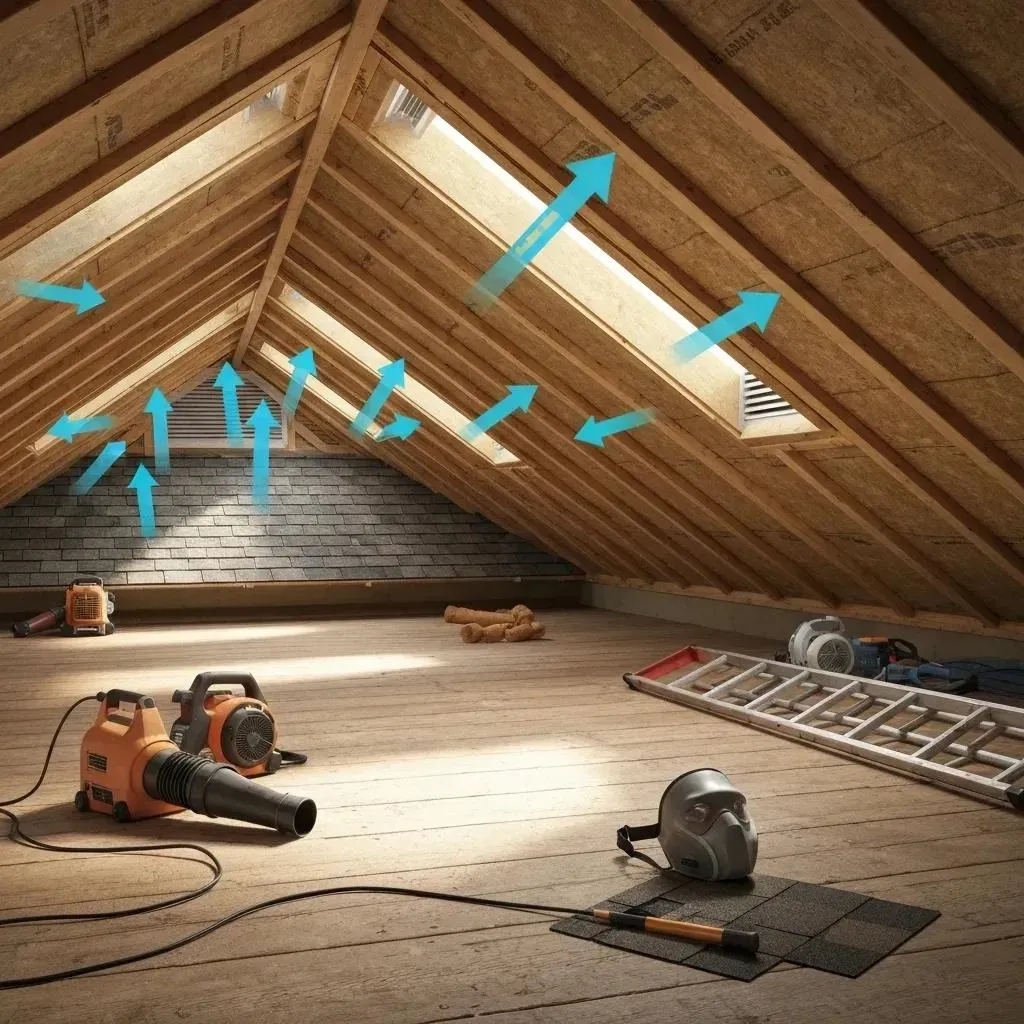
Upgrading to a balanced system of soffit and ridge vents promotes constant airflow, preventing stagnant, humid air pockets. Installing turbine vents or powered attic fans can boost ventilation when natural airflow isn't enough.
How Does Routine Roof Maintenance Prevent Mold?
Regularly checking shingles, flashing, and valleys helps catch small issues before they become leaks. Quickly fixing cracked tiles or worn-out sealants stops water from entering the attic and keeps the structure dry.
Why Is Sealing Air Leaks Crucial for Mold Prevention?
Sealing gaps around light fixtures, ductwork, and plumbing on the ceiling stops warm, moist air from your home from entering the attic. A solid air barrier reduces condensation risks and keeps temperature zones separate.
How Can Moisture Control Devices Lower Mold Risk?
Dehumidifiers and humidity sensors monitor attic conditions, automatically turning on when the relative humidity gets too high. This active moisture management prevents the damp environment mold needs to thrive.
What Insulation Practices Keep Attics Mold-Free?
Using the right R-value for Denver's climate and installing a vapor retarder on the warm side of the insulation prevents condensation within it. Making sure insulation is fully installed without being compressed maintains its thermal performance and resistance to mold.
What Does Professional Attic Mold Remediation Involve?
Professional remediation includes certified inspection, setting up containment barriers, using effective removal methods, repairing structural damage, and conducting thorough clearance testing to make the attic safe again.
The Mold Remediation Process
Professional remediation blends certified inspection, engineered containment, proven removal techniques, structural repair, and rigorous clearance testing to restore a mold-safe environment.
This source outlines the professional mold remediation steps: inspection, containment, removal, repair, and testing.
Why Is a Professional Mold Inspection So Important?
A certified inspector uses tools like moisture meters, infrared cameras, and surface samples to find mold hotspots and identify the type of mold. Catching it early means a more targeted treatment plan that gets rid of hidden mold and stops it from coming back.
How Are Containment and Air Filtration Used During Mold Removal?
Negative-pressure containment barriers keep the affected area separate, while HEPA-filtered air scrubbers trap airborne mold spores. This two-pronged approach protects unaffected areas and maintains good air quality throughout the cleanup.
What Are the Safe Ways to Remove Mold from Attics?
Remediation specialists use methods like dry-ice blasting, HEPA vacuuming, and antimicrobial treatments to remove mold from wood, insulation, and surfaces without harsh chemicals or damaging the structure.
| Method | How It Works | Benefit |
|---|---|---|
| Dry-Ice Blasting | Extreme cold dislodges spores | Cleans framing without abrasion |
| HEPA Vacuuming | Filters microscopic particles | Captures tiny mold particles |
| Antimicrobial Spray | Inhibits cell growth | Helps prevent mold from returning |
How Is Structural Damage Repaired After Mold Removal?
Technicians replace damaged sheathing, restore insulation to its proper R-value, and reinforce roof components as needed. Fixing the structure correctly prevents moisture from accumulating in the repaired areas.
What Is Post-Remediation Clearance Testing and Why Is It Necessary?
Clearance testing involves taking air and surface samples and comparing them to initial readings to confirm that spore levels are back to safe standards. Official clearance means the attic is clean, safe, and ready to be occupied again.
What's the Typical Cost for Attic Mold Removal in Denver?
The price for attic mold remediation depends on how severe the mold is, the type of mold, how easy the attic is to access, and the amount of work involved. We offer clear estimates and can work with your insurance.
What Factors Affect the Cost of Attic Mold Removal?
The cost of mold removal is influenced by the size of the mold infestation, the containment measures needed, the attic's size and entry points, and whether toxic molds like Stachybotrys chartarum are present.
What's the Average Price Range for Attic Mold Remediation?
Denver homeowners usually spend between $1,500 and $6,000 for attic mold removal. However, extensive or hard-to-reach jobs can cost up to $15,000.
Cost of Attic Mold Removal
Denver homeowners typically invest between $1,500 and $6,000 for attic mold removal, with extensive or hard-to-access jobs reaching $15,000.
This source provides details on how much attic mold removal typically costs in Denver.
Does Homeowners Insurance Cover Attic Mold Removal?
Insurance policies might cover mold resulting from sudden, accidental water damage, such as burst pipes or roof leaks. We can bill your insurance company directly to simplify the claims process, though coverage for issues related to poor maintenance usually doesn't apply.
How Can I Get a Free Attic Mold Removal Estimate?
Accountable Home Services provides completely free estimates based on assessments by IICRC-certified professionals. Call our 24/7 emergency line or book online to have us assess your attic and give you a clear quote.
What Are the Dangers of Black Mold in Attics and How Is It Removed Safely?
Black mold, known as Stachybotrys chartarum, releases mycotoxins that can cause significant respiratory and neurological problems, requiring specialized handling beyond standard mold cleanup.
The Dangers of Black Mold
Black mold (Stachybotrys chartarum) releases mycotoxins that pose serious respiratory and neurological hazards, necessitating specialized handling beyond standard remediation.
This source highlights the health risks linked to black mold, emphasizing why professional remediation is essential.
How Can You Spot Black Mold (Stachybotrys chartarum) in Your Attic?
Black mold typically appears as dark, slimy patches on damp wood and drywall and often has a musty smell. Lab testing of spores can confirm the species, allowing for specific removal strategies.
| Characteristic | Description | Importance |
|---|---|---|
| Color & Texture | Dark green to black, slimy | Helps distinguish it from dry, powdery molds |
| Odor | Strong, damp mustiness | Indicates active production of mycotoxins |
| Lab Testing | Surface or air samples | Confirms the presence of toxic species |
What Health Problems Can Black Mold Exposure Cause?
Exposure to black mold spores and mycotoxins can trigger severe asthma attacks, persistent sinusitis, skin rashes, and neurological symptoms, particularly in vulnerable individuals and children.
Why Is Professional Black Mold Remediation Necessary?
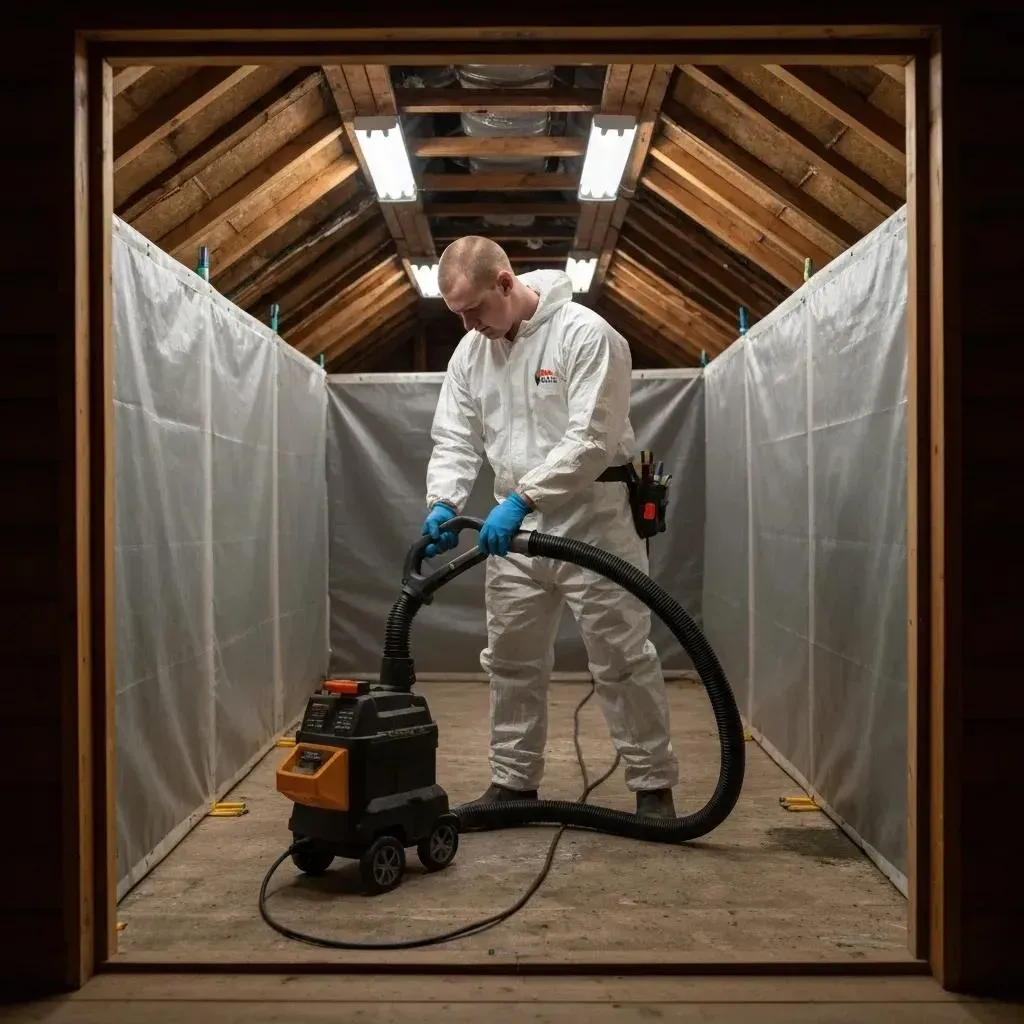
Only certified professionals use Level 3 containment, specialized personal protective equipment (PPE), and advanced HEPA-filtered systems to safely remove black mold. Attempting DIY removal risks spreading spores, causing health issues, and failing to eliminate the mold completely.
Why Choose Accountable Home Services for Attic Mold Removal in Denver?
Our local knowledge, industry certifications, and commitment to customer satisfaction ensure that every attic mold project meets the highest standards for safety and quality.
How Do IICRC and IRI Certifications Guarantee Quality Mold Remediation?
IICRC and IRI certifications confirm that our technicians are skilled in the latest industry best practices. This ensures that our mold inspections, removal, and restoration work adhere to national safety and effectiveness standards.
IICRC Certification
The IICRC is recognized globally as a reputable organization that promotes high standards of technical proficiency, ethical conduct, and professionalism. It is a non-profit organization that sets industry standards and provides certification for professionals in the inspection, cleaning, and restoration industries.
This source explains why IICRC certification is important for ensuring high-quality mold remediation.
What Are the Advantages of 24/7 Emergency Mold Removal Services?
Responding quickly to mold emergencies limits structural damage and prevents spores from spreading. Our round-the-clock availability provides Denver homeowners with peace of mind when leaks or mold outbreaks happen unexpectedly.
How Does Local Denver Expertise Benefit Mold Remediation?
Understanding Denver's climate patterns, common building styles, and typical moisture problems allows us to provide targeted prevention strategies—like addressing ice dam leaks and seasonal humidity spikes—to reduce mold risks.
How Does Direct Insurance Billing Make Mold Removal Easier?
By working directly with insurance companies, we simplify the documentation and claims process, reducing upfront costs and administrative hassle for homeowners throughout the remediation.
What Do Our Customers Say About Our Attic Mold Removal Services?
Clients frequently commend our quick inspections, clear communication, and effective, long-lasting results. Verified testimonials often mention our safe, thorough mold removal that restores air quality and structural integrity.
How Do Professionals Conduct Attic Mold Inspections and Testing?
Professional inspection and testing procedures are designed to find hidden mold, measure the extent of the infestation, and guide effective remediation strategies to restore a healthy attic environment.
Why Is Catching Mold Early Crucial for Attic Health?
Detecting mold before it forms visible colonies prevents deep structural damage, lowers cleanup costs, and protects indoor air quality by limiting the spread of spores into living areas.
What Are the Standard Mold Testing Methods for Attics?
Technicians use air sampling, surface tape lifts, and moisture meter readings to identify areas with contamination, determine the types of mold present, and measure the humidity levels that encourage mold growth.
How Do Certified Inspectors Ensure Accurate Mold Assessments?
IICRC- and IRI-certified inspectors follow established protocols for sampling, laboratory analysis, and reporting. This ensures precise data that informs remediation plans and clearance standards.
Attic mold presents both health and structural risks that require proactive prevention, expert removal, and thorough testing. By understanding moisture sources, improving ventilation, and partnering with an IICRC-certified local expert, Denver homeowners can ensure a dry, mold-free attic all year long. Contact us today for a free estimate or emergency service to protect your home's air quality and structural integrity.

